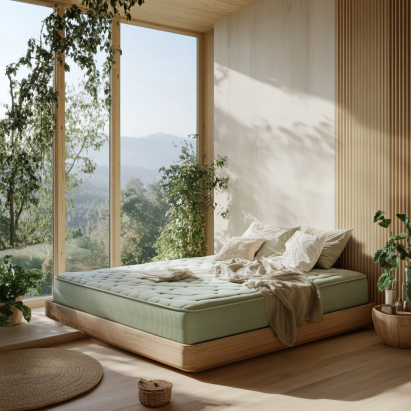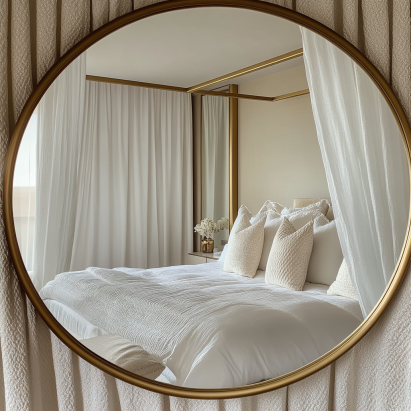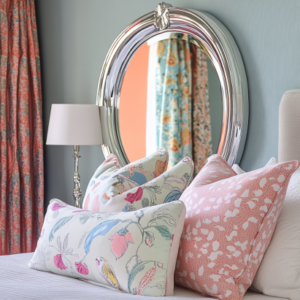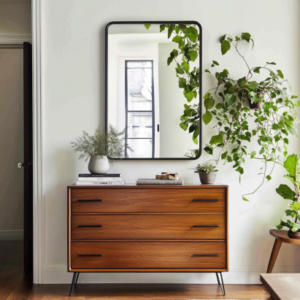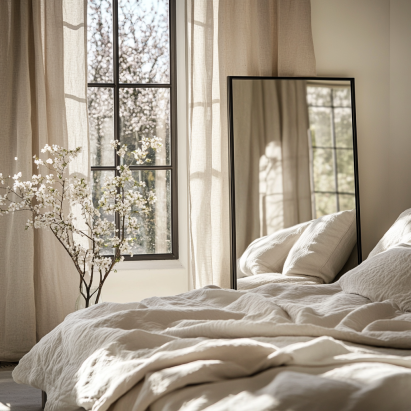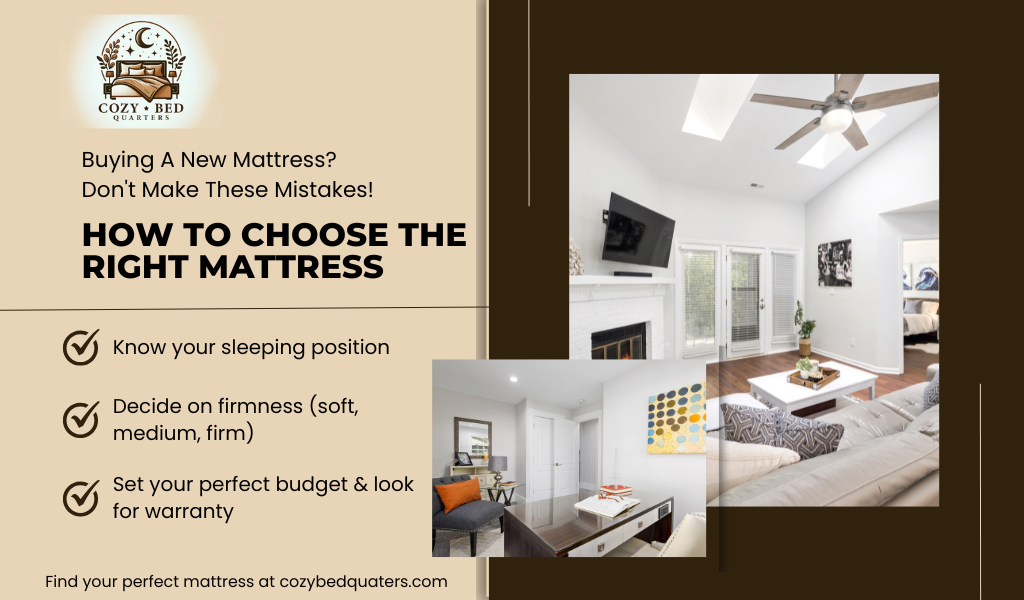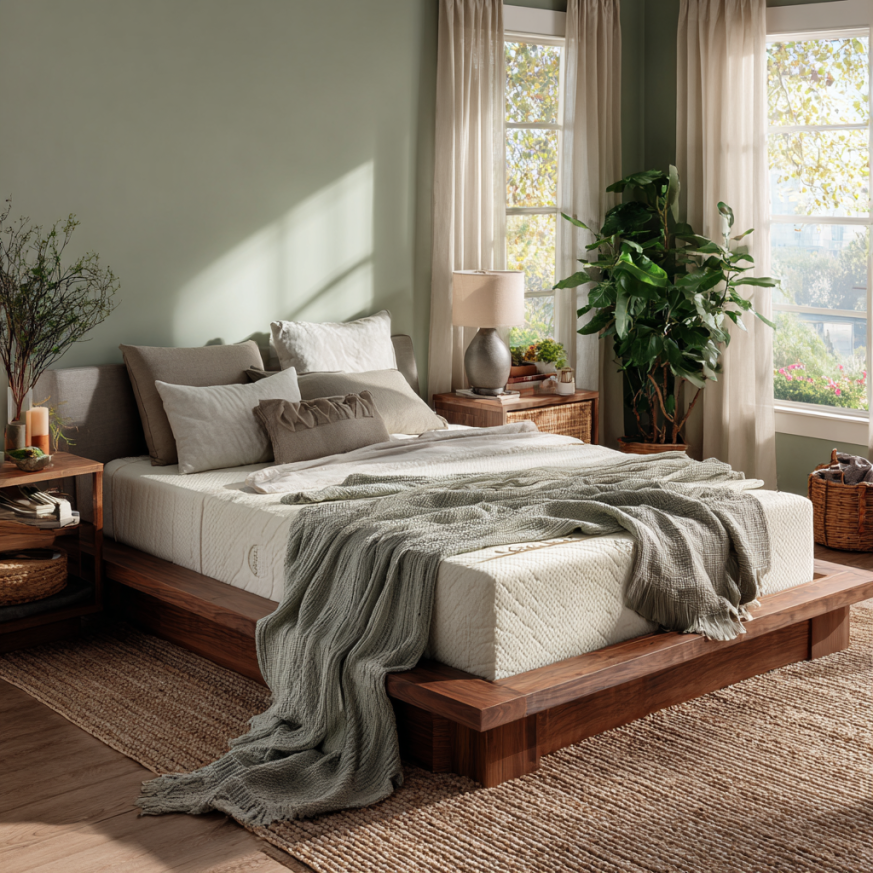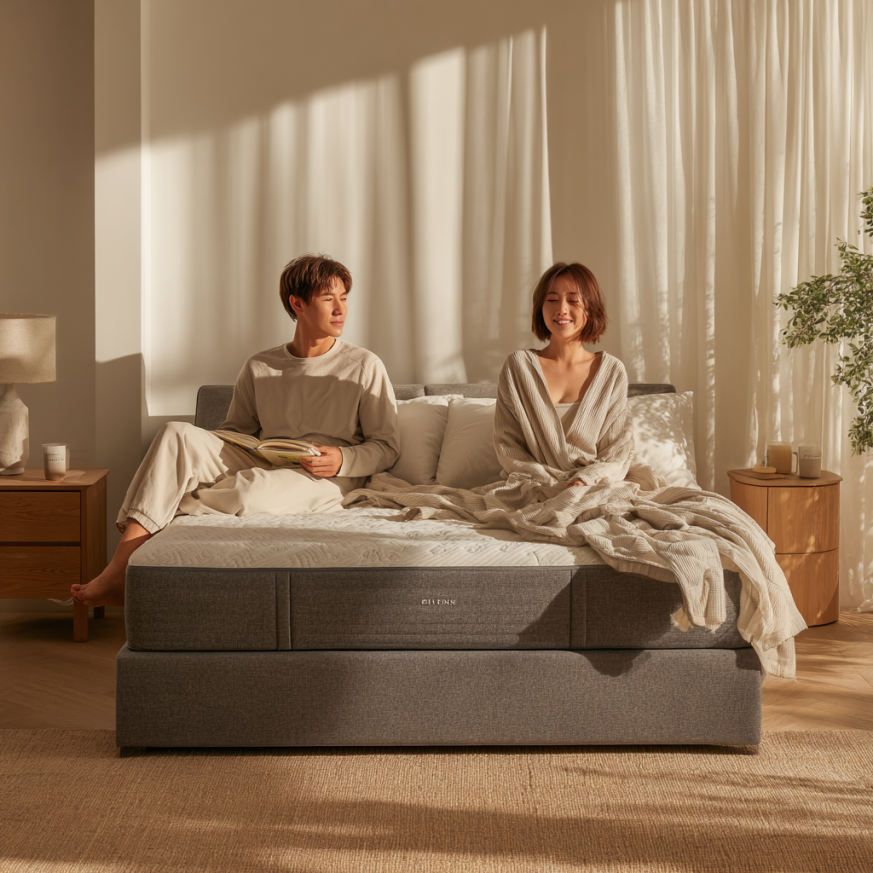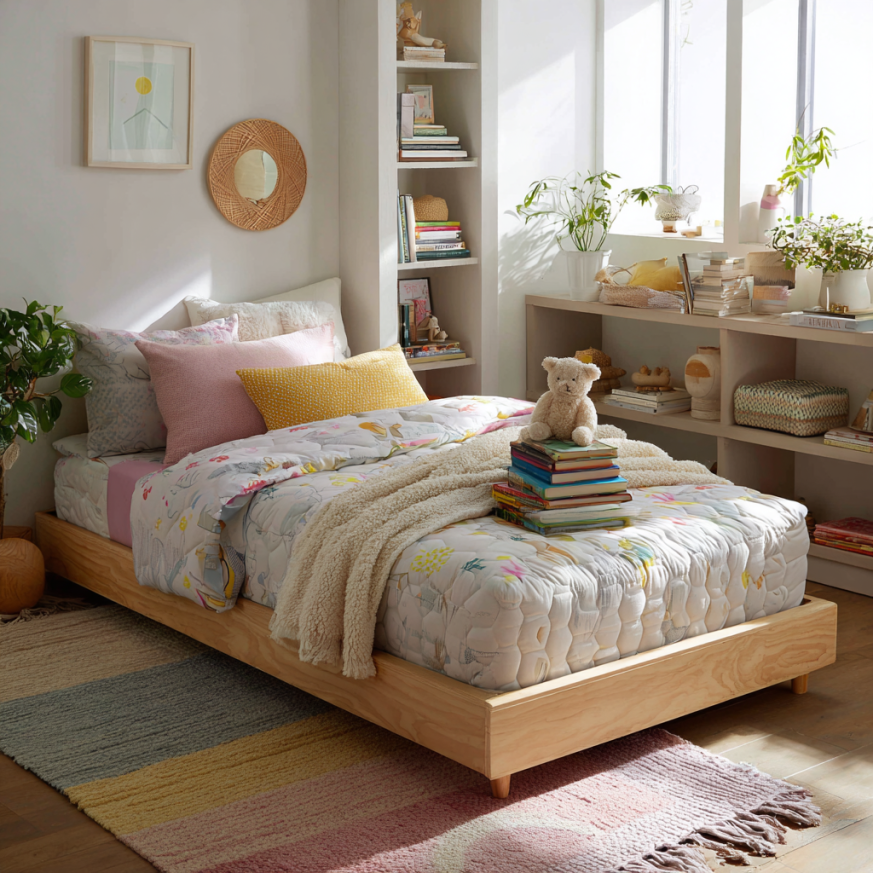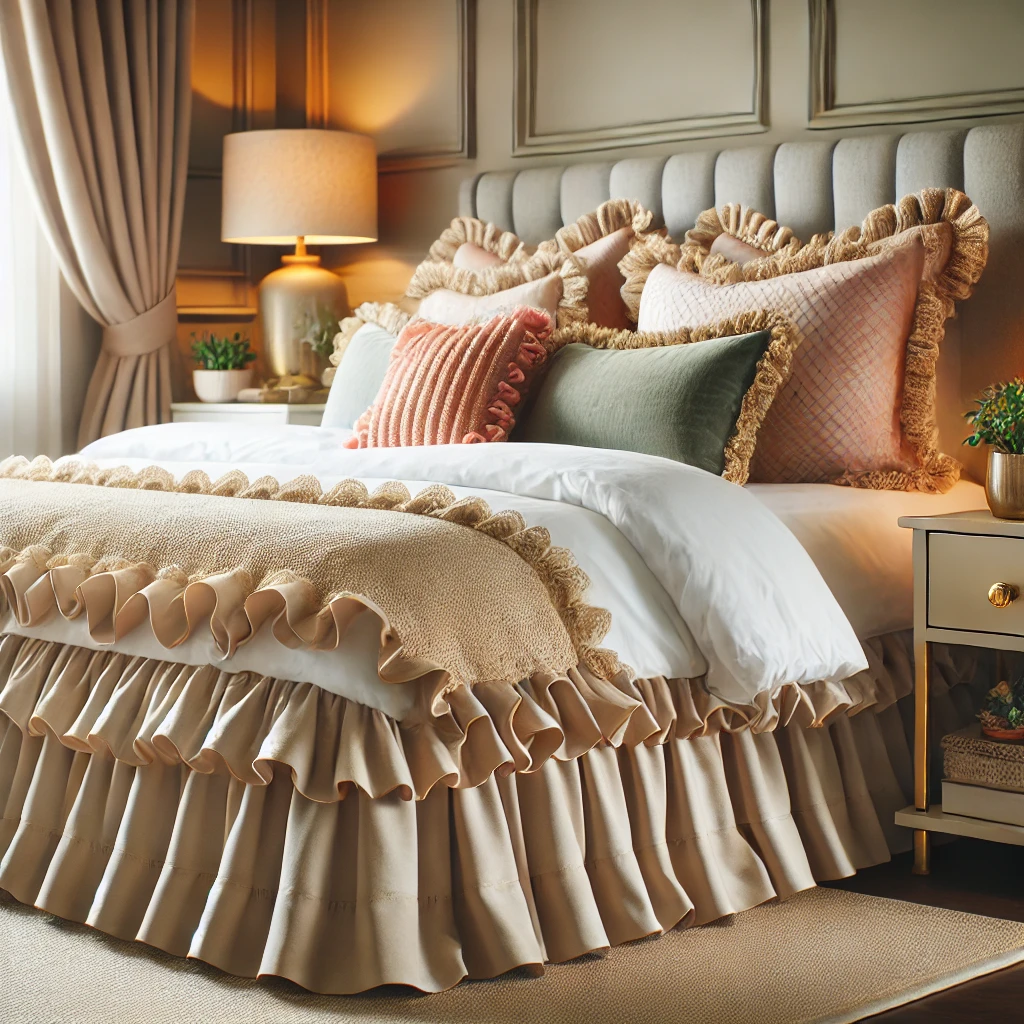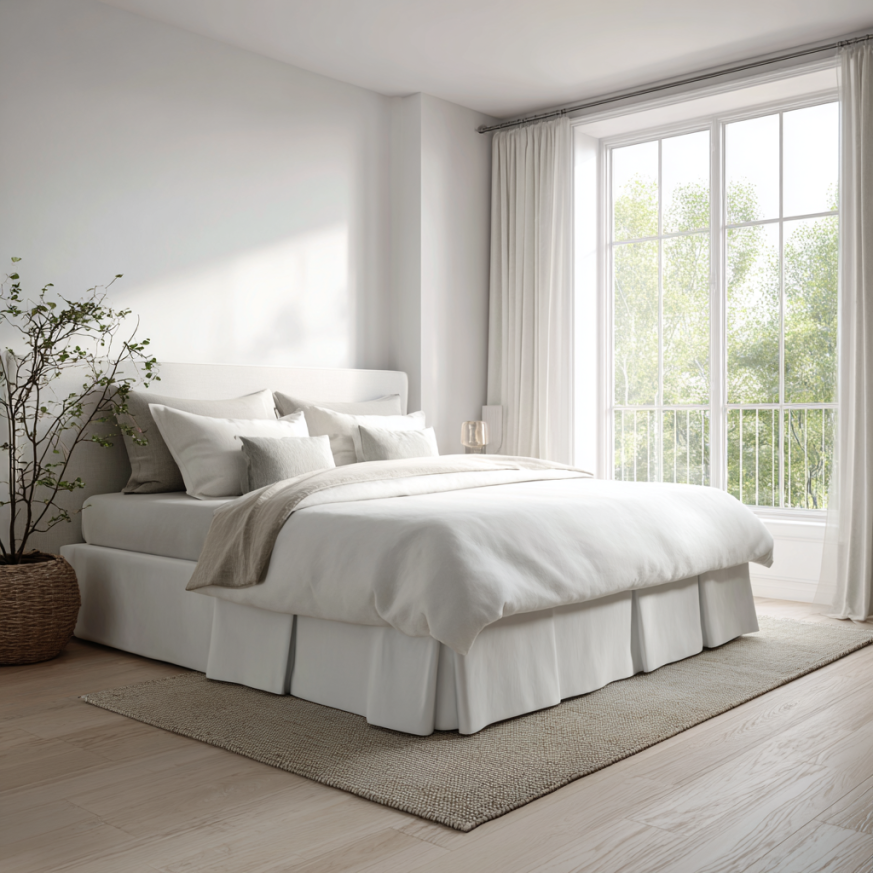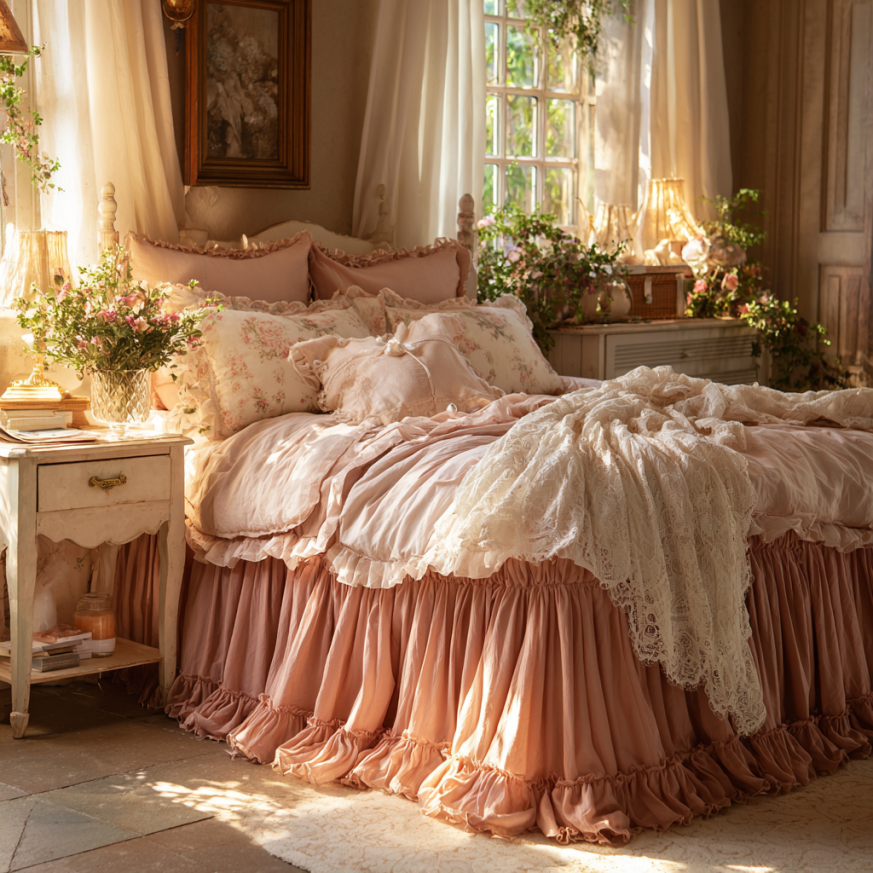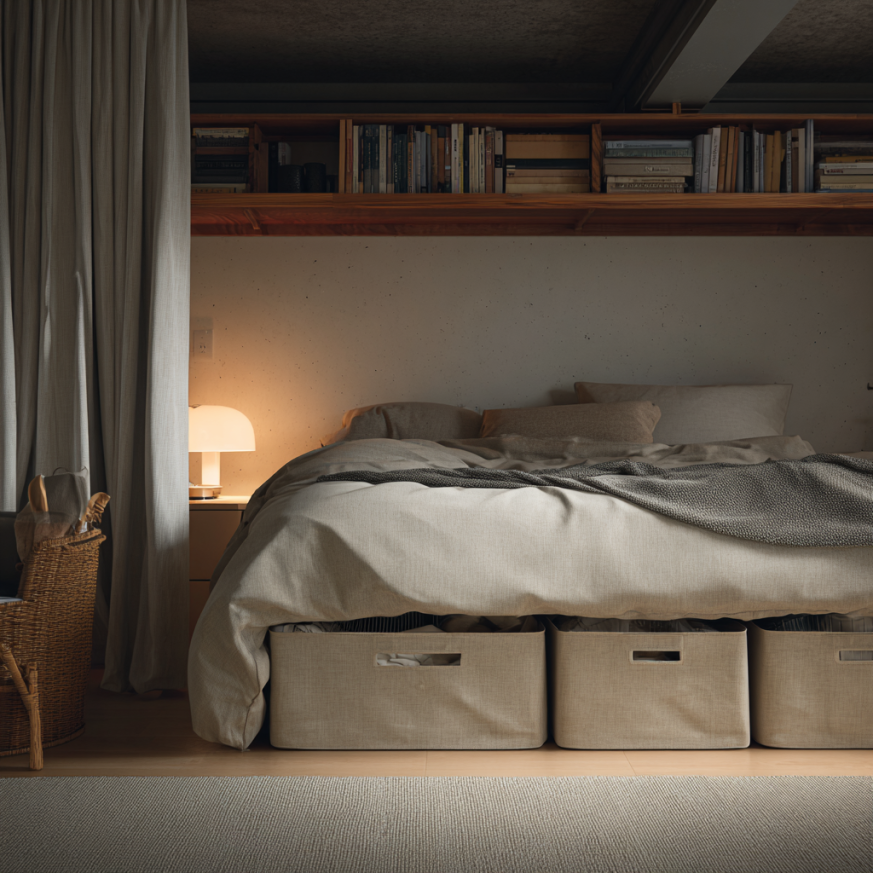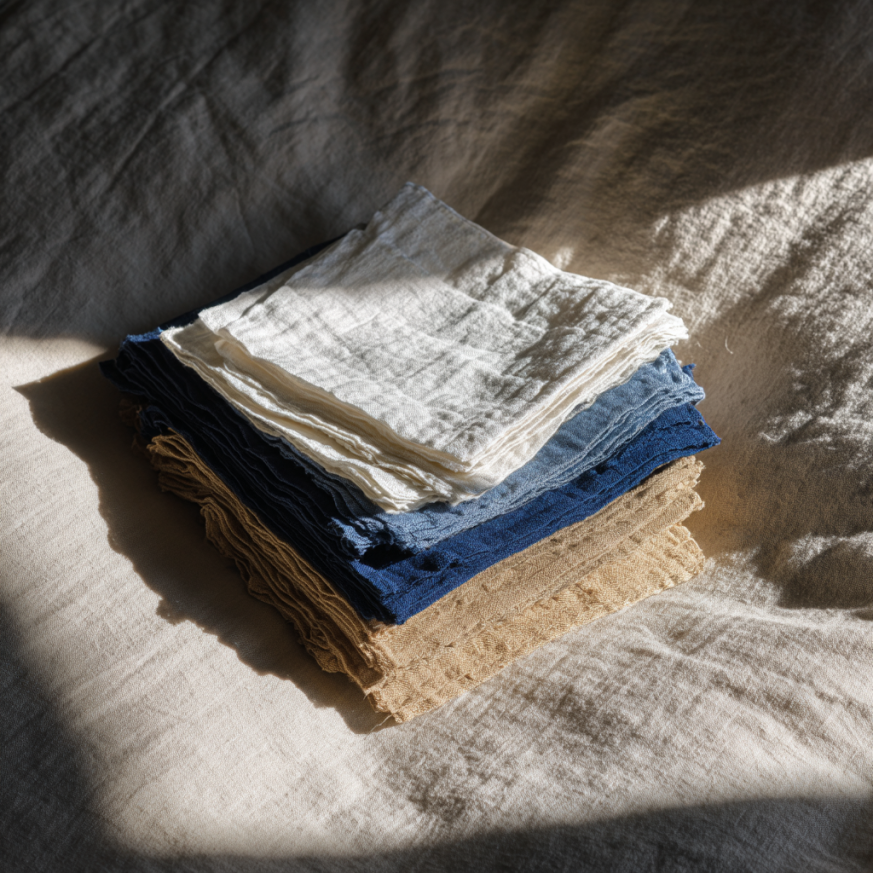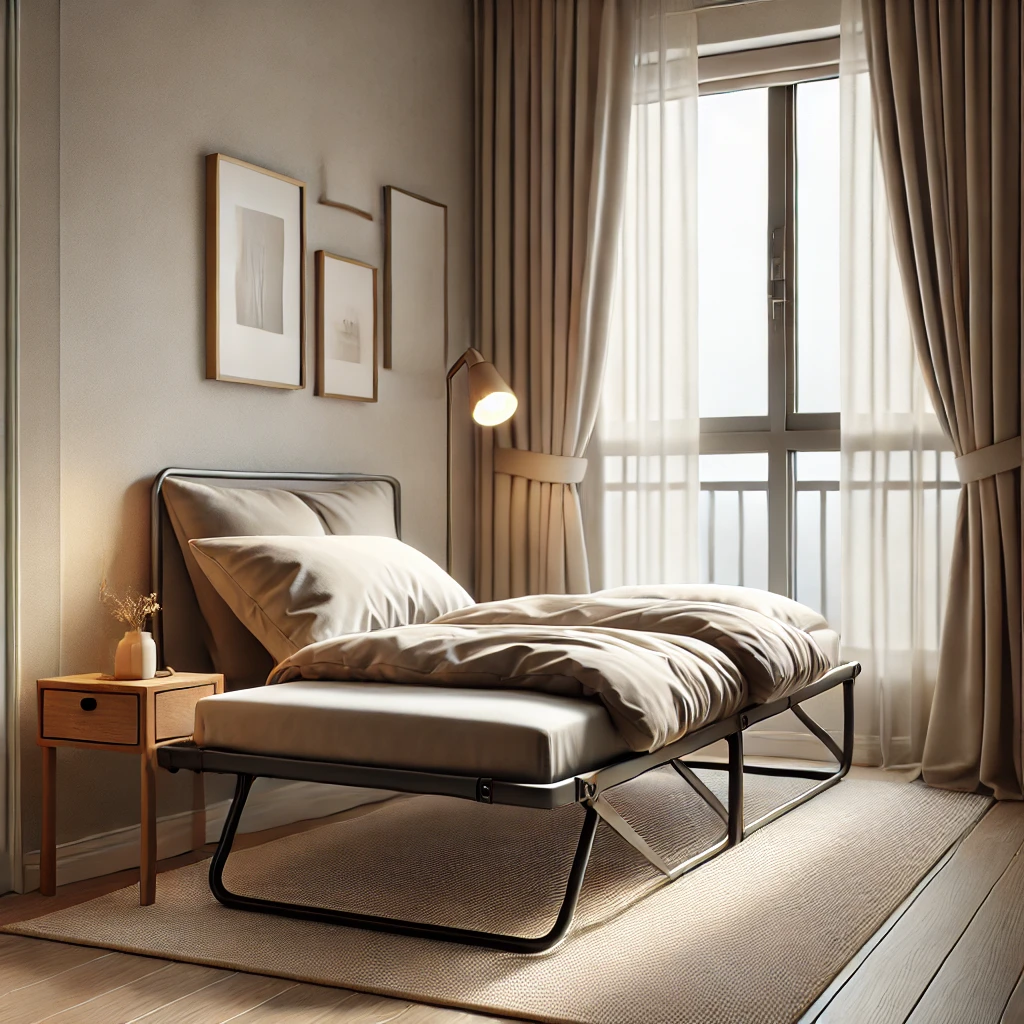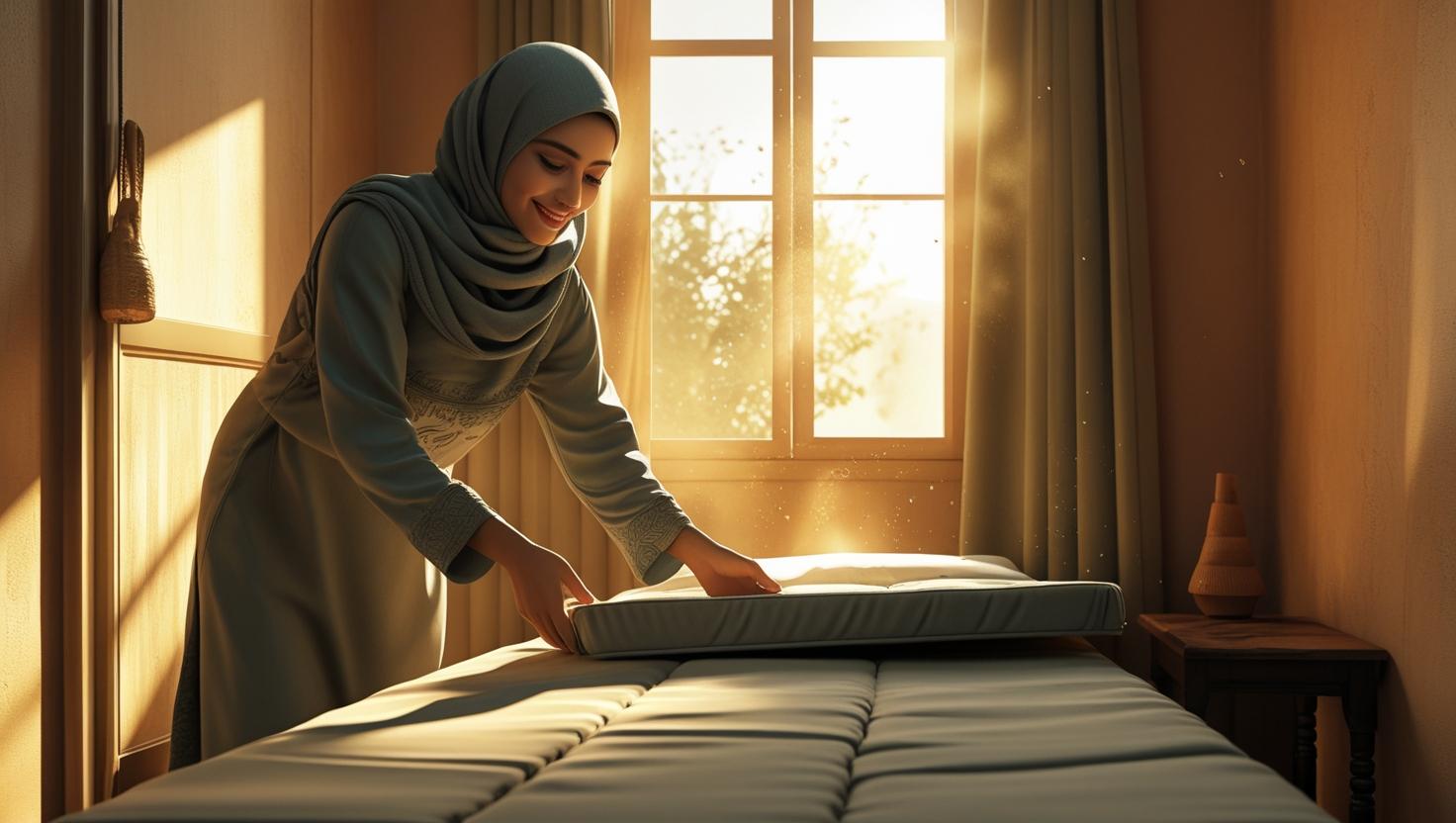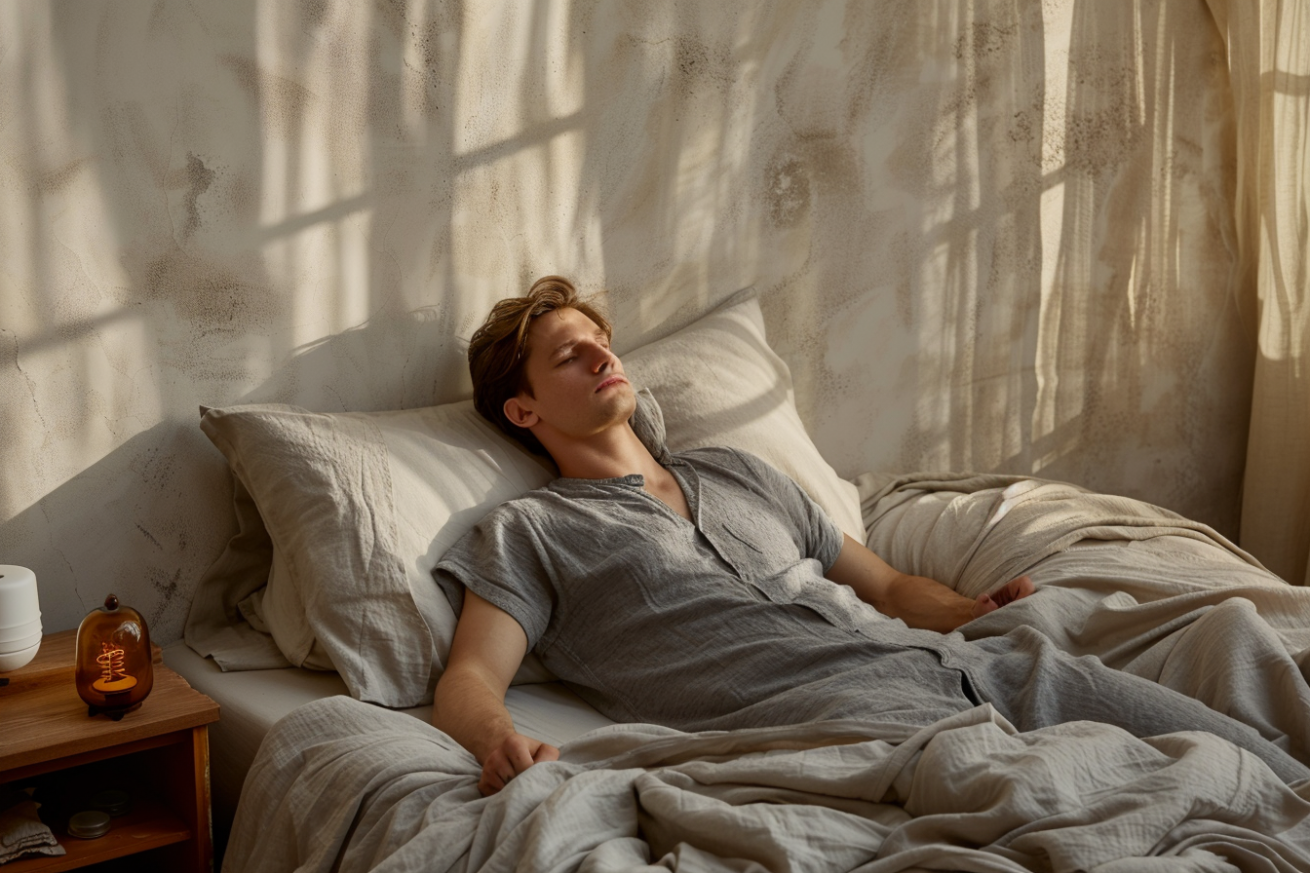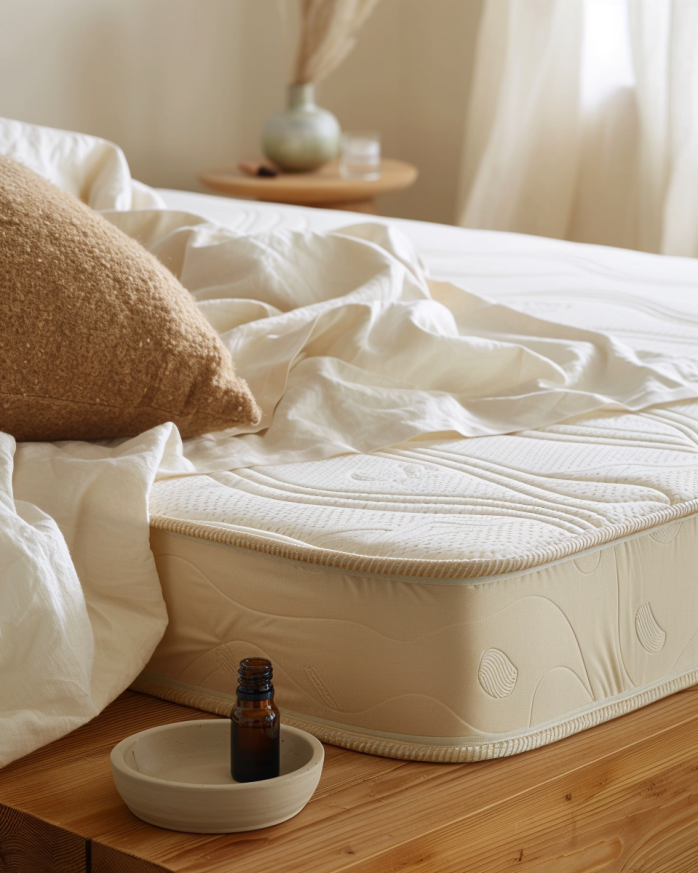Green Mattresses: Healthier, Eco-Friendly Sleep Solutions
Green mattresses offer a sustainable, healthier way to sleep by reducing toxins, supporting ethical manufacturing, and being recyclable or biodegradable. Discover how to choose, compare, and dispose of them responsibly for a cleaner, more conscious bedroom sanctuary.
For a deeper dive into eco-conscious bedding, check out our eco-friendly bedding guide.
Key Takeaways
- Green mattresses are made with natural, organic, and recycled materials.
- They help reduce indoor toxins and environmental impact.
- Sustainable disposal options include donation, recycling, and composting.
- Brands like Avocado and Birch offer top-rated green options.
- Certifications like GOTS, GOLS, and OEKO-TEX help guide eco-conscious decisions.
- Eco-friendly mattresses support both individual well-being and environmental sustainability.
What Is a Green Mattress?
A green mattress refers to a bed made using sustainable, organic, or recycled materials—like organic cotton, natural latex, and responsibly sourced wool. According to the Environmental Protection Agency, household furnishings contribute significantly to landfill waste, and mattresses are among the hardest to decompose due to synthetic foams and coils. Green mattresses aim to solve that issue by introducing more biodegradable and recyclable options into the sleep market.
They’re designed without harmful chemicals such as flame retardants, VOCs, or formaldehyde, making them safer for sleepers and the planet. These mattresses often come with certifications like GOTS (Global Organic Textile Standard), OEKO-TEX, and Greenguard Gold, which ensure their eco-credentials are verified and consistent with globally accepted environmental standards.
More than just their materials, green mattresses are often manufactured in ethical, low-impact facilities. Brands may use renewable energy, water-saving techniques, and zero-waste packaging to reinforce their commitment to sustainability from start to finish. These efforts contribute to reducing the overall carbon footprint of the sleep industry.
Another hallmark of green mattresses is their end-of-life plan. Many companies now offer take-back programs or encourage responsible recycling, helping to divert old mattresses from landfills and into second lives—as insulation, carpet padding, or metal recycling for coils.

Top Benefits of Green Mattresses
1. Healthier Indoor Air Quality
Traditional mattresses can off-gas harmful chemicals that linger in your bedroom air. Green mattresses are typically made without volatile organic compounds (VOCs), helping to maintain a cleaner indoor environment. This is especially important for individuals with asthma, allergies, or chemical sensitivities.
By sleeping on a green mattress, you’re not just resting easier—you’re also breathing easier. A non-toxic sleep environment can reduce allergic reactions, morning headaches, and even improve respiratory conditions over time. If you’ve ever noticed a “new mattress smell,” that’s VOCs at work. Green mattresses eliminate that problem entirely.

2. Eco-Conscious Materials
Green mattresses are crafted from renewable and biodegradable materials such as:
- Natural Dunlop or Talalay latex
- GOTS-certified organic cotton
- Recycled steel coils
- Wool from ethically raised sheep
- Plant-based foams and coconut coir
These materials reduce our reliance on petroleum-based products and help lower carbon footprints. Unlike conventional synthetic foams derived from fossil fuels, green materials regenerate naturally, often without needing harsh pesticides or chemical fertilizers.
Additionally, sustainably sourced latex offers natural resistance to mold, dust mites, and bacteria—extending the mattress’s lifespan and improving sleep hygiene. Wool acts as a natural temperature regulator and flame retardant, eliminating the need for chemical flame barriers.

3. Durable and Long-Lasting
Thanks to quality craftsmanship and high-integrity materials, green mattresses often outlast conventional counterparts—reducing waste and saving money in the long run. Many brands offer warranties spanning 20 years or more. A longer lifespan means fewer mattresses end up in landfills and fewer raw materials are consumed.
Green mattresses also tend to hold their shape and support better over time, particularly models using natural latex and hand-tufted construction. Unlike memory foam, which can break down and sag after a few years, these eco-friendly alternatives retain bounce and support with minimal degradation.
4. Ethical and Transparent Sourcing
Consumers today want to know where their products come from—and green mattress brands are rising to meet that demand. Ethical sourcing means fair labor conditions, animal welfare, and full transparency across the supply chain. Brands like Avocado and Birch clearly list every material they use and where it’s sourced from.
FAQ
- What is a green mattress?
- A green mattress is made from natural, organic, or recycled materials such as latex, cotton, and wool. It’s designed to be non-toxic, sustainable, and biodegradable.
- Are green mattresses better for your health?
- Yes. Green mattresses are free from VOCs, flame retardants, and other harmful chemicals, promoting cleaner indoor air and reducing allergy and asthma triggers.
- How long do green mattresses last?
- Most green mattresses last 10–25 years, depending on materials used. Natural latex models tend to have the longest lifespan with consistent support.
- What should I look for when buying a green mattress?
- Look for third-party certifications like GOTS, GOLS, or OEKO-TEX, and check for transparency in sourcing, ethical manufacturing, and end-of-life recycling options.
- How do I dispose of an old green mattress?
- You can recycle it through take-back programs, donate if it’s in good condition, or compost components like cotton or wool if they’re untreated.
This transparency not only builds consumer trust but also empowers shoppers to align their purchases with their values. Supporting companies that uphold fair trade practices and environmental accountability contributes to a global movement toward conscious consumption.
For more green bedding ideas, visit our guide on eco-friendly sleep essentials.

